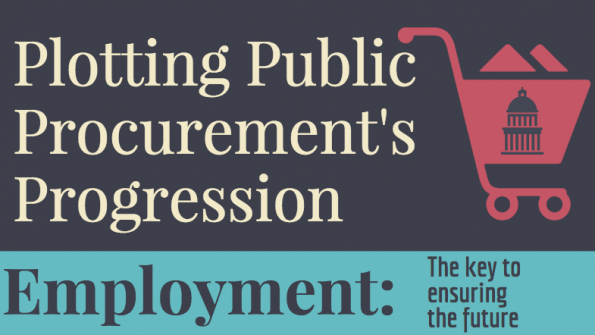Article

Infographic: Plotting public procurement’s progression
This infographic shows the trends that are shaping the future for the public procurement profession.
- Written by Jason Axelrod
- 20th October 2017
Tags: Procurement Article
Most Recent
-
 To ensure a level playing field, uniformity and consistency are important when interviewing job candidatesLocal government officials need to be highly visible when they recruit new talent to replace experienced pros, says Dave O’Reilly, COO at CivicPlus. The firm offers technology to governments in the form of a modern civic experience platform. The company’s tools enable one-stop, frictionless interactions for residents. The firm’s systems also help staff collaborate and […]
To ensure a level playing field, uniformity and consistency are important when interviewing job candidatesLocal government officials need to be highly visible when they recruit new talent to replace experienced pros, says Dave O’Reilly, COO at CivicPlus. The firm offers technology to governments in the form of a modern civic experience platform. The company’s tools enable one-stop, frictionless interactions for residents. The firm’s systems also help staff collaborate and […] -
 To keep workers and citizens safe, government leaders need to pinpoint where there are hazardsWhen local governments are looking to improve worker and community safety, they should first take a step back, says Greg McKenna, the national practice leader, public sector at Gallagher Bassett, which delivers partnered claims management programs to all types of organizations, including employers and public entities, as well as insurance carriers. The company provides comprehensive […]
To keep workers and citizens safe, government leaders need to pinpoint where there are hazardsWhen local governments are looking to improve worker and community safety, they should first take a step back, says Greg McKenna, the national practice leader, public sector at Gallagher Bassett, which delivers partnered claims management programs to all types of organizations, including employers and public entities, as well as insurance carriers. The company provides comprehensive […] -
 Here’s a quick sustainability win: Make structures more energy-efficientCities and counties can achieve significant sustainability wins in the short term by focusing on actions that deliver tangible benefits fairly quickly, says Jimmy Carchietta, a LEED accredited professional and founder of Cotocon Group, a New York-based sustainability consultancy that helps its clients plan and construct efficient, sustainable and low-carbon-footprint buildings throughout the U.S. The […]
Here’s a quick sustainability win: Make structures more energy-efficientCities and counties can achieve significant sustainability wins in the short term by focusing on actions that deliver tangible benefits fairly quickly, says Jimmy Carchietta, a LEED accredited professional and founder of Cotocon Group, a New York-based sustainability consultancy that helps its clients plan and construct efficient, sustainable and low-carbon-footprint buildings throughout the U.S. The […] -
 Training, certification and digital tools can help prevent workplace injuries and deathsWorker safety in government remains a priority. The number of preventable fatal workplace injuries in government, however, grew from 311 in 2021 to 352 in 2022, according to the National Safety Council. Among all industries in the U.S., the number of preventable fatal workplace injuries totaled 4,695 in 2022. Safety and safety training should be […]
Training, certification and digital tools can help prevent workplace injuries and deathsWorker safety in government remains a priority. The number of preventable fatal workplace injuries in government, however, grew from 311 in 2021 to 352 in 2022, according to the National Safety Council. Among all industries in the U.S., the number of preventable fatal workplace injuries totaled 4,695 in 2022. Safety and safety training should be […]
















The two most important
The two most important changes are the electronic methods for both solicitations and contract management (including filing) and a trend toward workload sharing through decentralized procurement of small dollar transactions. Pcards are a part of this movement, as are electronic payments that interface with ERP’s.
I believe that professional purchasing officers will be paid more, but given a smaller staff. The decentralization (with purchasing overview) and electronic processes will allow the change. High-dollar procurement and professional services will still be managed by well-trained and empowered procurement professionals.